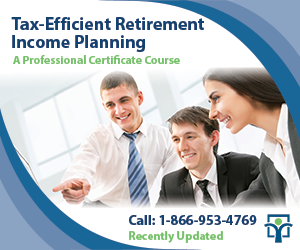Last updated: December 13 2017
Spotlight on the RRSP: 12 Year-End Tax Tips

The RRSP can play a prominent role in many of the year end tax strategies still available to pay less tax in the 2017 tax year. The RRSP contribution deadline is March 1, 2018. Following are the first six of a dozen tips to consider as the holidays begin and before this year ends:
1. December 15/31 Instalment Remittances. The fourth remittance for calendar year 2017 is due for most taxpayers on December 15; for farmers and fishers on December 31. But do you have to pay? That’s the question for advisors and clients to answer when they add an RRSP top up strategy to the mix. Use the Knowledge Bureau’s Income Tax Estimator to strategize.
2. Investors: Review your non-registered portfolio to crystallize accrued capital gains in order to offset any realized losses or, conversely, crystallize losses to offset realized gains for the year. Final date for selling securities in 2017 is December 27. Remember you can avoid paying tax on your accrued gains with a transfer of securities to your favorite charity before year end.
3. Spouses: Make eligible spousal RRSP contributions based on the higher earner’s contribution room before year-end. The higher earner will take the tax deduction and the happy result is the opportunity to split RRSP benefits in retirement down the line. A lower combined family net income can also create or increase Canada Child Benefits. Also, if the lower-income spouse earns dividend income, consider making a regular RRSP contribution in that spouse’s hands. If advantageous the higher earner can elect to transfer dividends and the dividend tax credit from the lower earner, if by doing so a spousal amount is created or increased. Again, do an income tax estimation now.
4. Parents: Contribute to your adult child’s RRSP by March 1, 2018, to reduce their tax bill. This could enable a transfer of up to $5000 in tuition amounts to the supporting parent’s return.
 |
5. Students: Make RRSP contributions to reduce net income and increase refundable tax credits. If returning to post-secondary school, consider withdrawals from your RRSP under the Lifelong Learning Plan (LLP) to fund education, if you are cash strapped.
6. Home buyers: Consider tax free withdrawals from your RRSP under the Home Buyers’ Plan (HBP) to fund a home purchase in 2018. However, you’ll need to schedule repayments to avoid a taxable inclusion of those withdrawals down the line. You can withdraw up to $25,000 but repayments must be made over 15 years starting the second year after the year of withdrawal.
Additional educational resources: Tax Efficient Retirement Income Planning, Debt and Cash Flow Management, MFA – Retirement Services Specialist™.
©2017 Knowledge Bureau Inc. All Rights Reserved.





